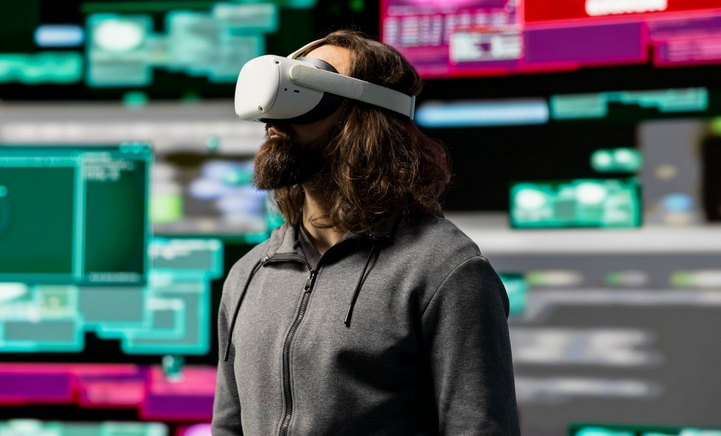The future of sports broadcasting: Immersive experiences and interactive viewing
October 28, 2025

There was a time when watching football meant a sofa, a pint, and a sense of belonging you couldn’t quite explain. You didn’t need 4K cameras or holograms; you just needed ninety minutes and a reason to care. Now, though, the game’s not just on your screen – it’s inside it.
Sports broadcasting has gone from showing the story to letting you step into it.
Inside the Screen
The NBA’s virtual courtside seats were the first clue that something strange was happening. Fans could appear on digital boards, half spectators, half ghosts. Since then, we’ve had 360-degree replays, drone footage, and camera angles that make you dizzy. You can follow a winger’s run as if you’re wearing his boots – terrifying if you’re defending, thrilling if you’re not.
Broadcasters like BBC Sport and ESPN now flirt with mixed reality, layering live data and tactical diagrams right over the pitch. It’s part sci-fi, part match day. What used to be a simple “watch along” has turned into a sensory invasion.
Data With a Pulse
Once, statistics were tucked away in the commentator’s notebook. Now they’re everywhere – sprint speeds, pass maps, expected goals, even emotional tracking. AI systems from IBM Watson build instant stories from thousands of data points.
During the 2024 Euros, broadcasters predicted substitutions before they happened. It felt like the algorithm had joined the punditry team, only without the smugness. Fans now watch football like traders track stocks – nervously, analytically, endlessly scrolling.
Chatting With the Game
Twitch and Prime Video have made sports chatty again. You can vote on tactics, switch commentary feeds, or jump into alternate camera views. Formula 1’s app even lets you ride shotgun with your favorite driver, hearing every muttered curse and breath.
The audience has stopped being the audience. It’s become the co-author. You shout into the stream and, for once, it shouts back.
The Bet Behind the Broadcast
And then there’s betting – no longer a separate ritual, but part of the main event. The platform MelBet has turned live odds into another layer of the show. You can watch a match, feel its rhythm, and react before the next corner is even taken.
That second screen – your phone, your tablet – is now the real arena. Odds shift, stats update, and social reactions roll in faster than a counterattack. It’s thrilling, occasionally maddening, and increasingly normal. Still, as the Responsible Gambling Council likes to remind us, the real game is knowing when to stop.
Cameras That Think
Behind it all, machines are learning how to film emotion. AI follows the ball, cuts the highlights, and builds replays in seconds. No human camera crew could keep up. The next big match you watch might be stitched together entirely by software – a silent editor with perfect timing.
Companies such as Cloudflare and TechTarget keep the feed clean and the lag invisible. The result? You can stream from anywhere without missing a beat. A fan’s living room now runs on more computing power than a small TV truck once did.
Social Stadiums
The broadcast never ends from postgame to postday. Now, fans stream onto digital terraces: threads, live chats, and replay feeds, to break down the tactics and go over each error in slo-mo. A missed penalty can trend for hours, turning strangers into analysts and comedians all at once.
Before long, the algorithm will know your loyalties – who you cheer for, who you curse, and what heartbreaks you can’t bear to replay. It will present your highlights accordingly, either sparing you or twisting the knife.
The Human Signal
There’s a danger in all this brilliance. When the game becomes too perfect, too predictable, you start missing the noise – that glorious mess of half-heard chants, delayed commentary, and someone yelling “shoot!” at the TV. The best broadcasts still leave space for chaos, for joy that isn’t pixelated.
Beyond the Frame
By 2030, AR glasses will probably be common to all of us projecting live stats on our coffee tables and sharing the same digital stadium with friends continents away. The technology will be astonishing. But the real trick, the magic trick, will be holding onto that small, irrational feeling that makes sport matter in the first place.
In the age of wraparound screens, multi-millisecond metro passes, and whatever else, what we really want hasn’t changed: to feel part of something unpredictable, human, and gloriously alive.
Other posts by :
